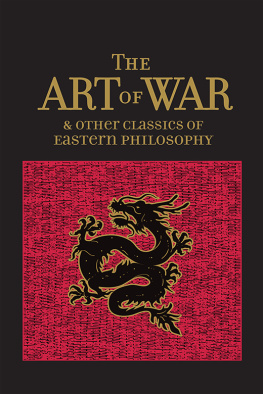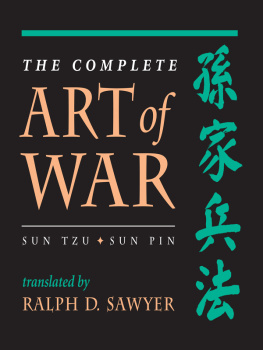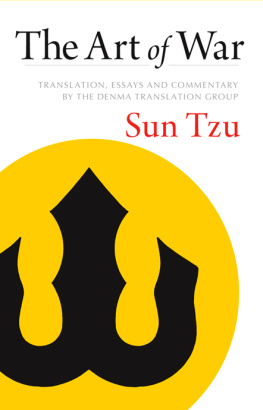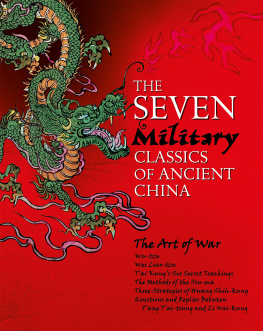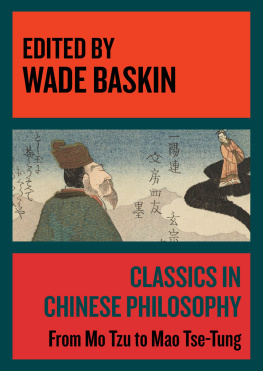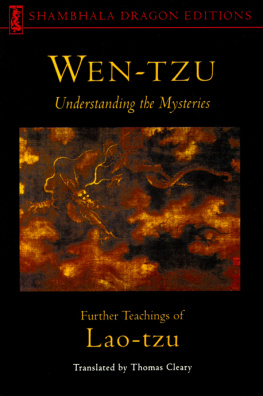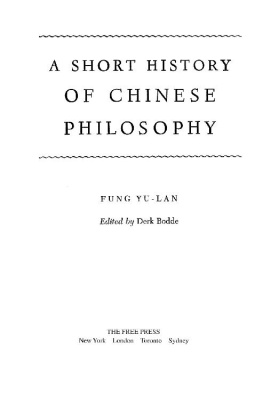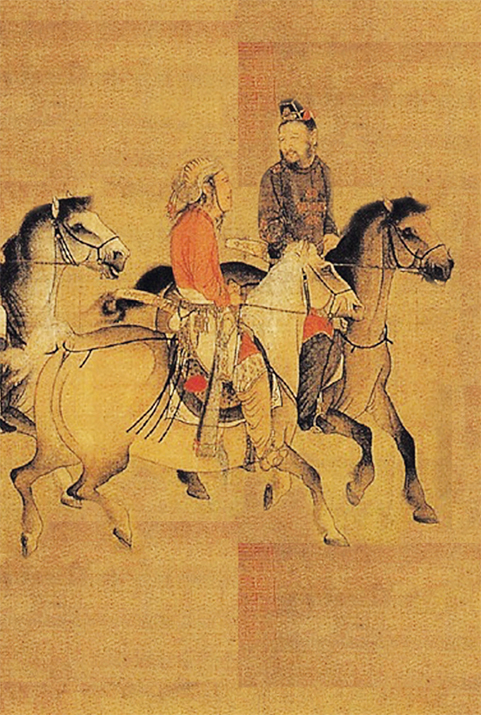The Art of War
& Other Classics of
Eastern Philosophy

Introduction by Ken Mondschein, PhD

Copyright 2016 Canterbury Classics
All rights reserved. No part of this publication may be reproduced, distributed, or
transmitted in any form or by any means, including photocopying, recording, or other
electronic or mechanical methods, without the prior written permission of the publisher,
except in the case of brief quotations embodied in critical reviews and certain other
noncommercial uses permitted by copyright law.
Canterbury Classics
An imprint of Printers Row Publishing Group
10350 Barnes Canyon Road, Suite 100, San Diego, CA 92121
www.thunderbaybooks.com
Printers Row Publishing Group is a division of Readerlink Distribution Services, LLC.
The Canterbury Classics name and logo are trademarks of Readerlink Distribution Services, LLC.
All correspondence concerning the content of this book should be addressed to
Canterbury Classics, Editorial Department, at the above address.
Publisher: Peter Norton Publishing Team: Lori Asbury, Ana Parker, Laura Vignale, Kathryn Chipinka
Editorial Team: JoAnn Padgett, Melinda Allman, Dan Mansfield, Traci Douglas
Production Team: Jonathan Lopes, Rusty von Dyl
Cover and endpaper design by Ray Caramanna
eISBN: 978-1-62686-820-5
eBook edition: September 2016
CONTENTS
T he volume you hold in your hands contains some of the foundational texts of a great civilization. For centuries, the Confucian exam system was the means to upward mobility in Imperial China. Passing the test and acquiring status and salary required mastering a canon of books and being able to reiterate their ideas in such forms as the eight-legged essay. Whether these books affected Chinese civilization, or the unique aspects of Chinese civilization were passed on through these texts, or if it was some combination of the two, is a moot question: If one wants to understand Chinese culture and thoughtand thus understand a rising power in our modern worldthen these texts must likewise be understood. They contain values, strategies, and ways of reasoning; they are in the DNA of a culture. To know the future, we must understand the past.
The first thing we must do is rid ourselves of Western ideas about the nature of this thought system. Confucianism and Taoism are not religions in the way they are understood in the West. Rather, they are a European appellation for a complicated thought system. It is important to understand that what we are presenting in this book are jing, or classicsbooks from the canon of authoritative texts. Though this volume principally presents The Art of War, the great classic on military strategy that provided guidance to Chinas leaders well through the Qing dynasty (16441911), it is impossible to understand Sun Tz without understanding the culture from which he came and which canonized his work as a jing. Accordingly, we will first look at Confucius, the most revered sage in the Chinese system of thought, under whose name the entire system is often subsumed, and then continue with Mencius and Lao Tz before turning to Sun Tz and his work.
Life and Teachings of Confucius
K ung Fu-tzu (in the Wade-Giles system of Romanization) or Kongfuzi (in the modern Pinyin system) is traditionally held to have been born in 551 BCE in the state of Lu, now in Shangdong Province. The name Confucius is a Latinization of his Chinese name, most probably by the sixteenth-century Jesuit missionary Matteo Ricci. At the time of his birth, China was experiencing the Spring and Autumn period of the great Zhou empire, a time of disorder following the collapse of central authority. Rulers fought among themselves and the common people suffered, caught between civil war, heavy taxation, and bandits. Lu was noted for preserving many of the Zhou traditions, and Confucius was no doubt steeped in this knowledge as a young man. At the time, there was no emperor; rather, the region that would become China was composed of petty states, each ruled by its own king. In some ways, it was comparable to the disorder of the European Middle Ages that followed the collapse of the Roman Empire.
From his writingsor, rather, the records of his teachings left by his students and his students studentswe get the idea of Confucius as a wandering scholar-administrator, traveling from court to court and advising rulers as to how best govern their states. He was not unique in this: The Spring and Autumn period, for all its disorder, was the time of the so-called Hundred Schools of philosophy and an era of tremendous cultural creativity. Other than that, we have little definite information on Confuciuss early life. Sima Qian (c. 14586 BCE), the great historian of the Han dynasty (206 BCE220 CE), writes that he came from a noble family that had sunk into poverty, and was forced to take such jobs as working at a stable. His life was fraught with instability and danger. Yet, Sima Qian lived more than four centuries after Confucius, and records of earlier times were scant thanks to the suppression of the Hundred Schools by Qin Shi Huangdi, the ruler who united China from 220 to 210 BCE as the first emperor of the Qin dynasty.
Thus, this everyman depiction of Confucius may have been a romantic legend; certainly, other aspects are fanciful. For instance, Sima Qian also says that Confucius had 3,000 disciples. There are inconsistencies in his biography, as well. Was Confucius always the model of decorum he presents? Did a man who was famously adverse to capital punishment serve as the chief law enforcer of Lu? Did he really delight in the I Ching and other texts that came to be known as the Confucian classics?
We can perhaps gain a truer picture by looking at the gist of what Confucius says. First, he was strongly conservative in his outlook and admired the virtues of the Zhou. His governing philosophy placed great emphasis on hierarchy, morality, and proper relationships. The linchpins of these are yi (ethics) and li (religious rituals): In contrast to the disorder of his own day, Confucius believed everyone on the social ladder must behave properly and dutifully to those above them and those below them. By rectification of names (zhengming), he means that peoples behavior should correspond to the social titles that they possess. Thus, a son who usurped his fathers throne was not using his proper title or displaying proper filial piety. It is only natural that those under him would be corrupt, and the country poorly governed.
Confucius also knew the power of religion to unite people. Likewise, rulers and those under them should perform the proper ceremonies, such as sacrificing to the dead, with the proper religious music. The purpose of this is to bring oneself into harmony with the spiritual and natural world and cultivate virtue (de). Rituals are training in self-abnegation and self-discipline. By properly performing the rituals and keeping right thought and right feeling in his state, proper relations between people will be preserved and the ruler will maintain the Mandate of Heaventhe divine right to rule. Court rituals function to preserve harmony and keep the ruler in harmony with the universe, aligning the microcosm with the macrocosm. Divination, astrological observation, music, etc., are all intended to reinforce this relationship. (This also mirrors animistic tendencies in Western thought: The

